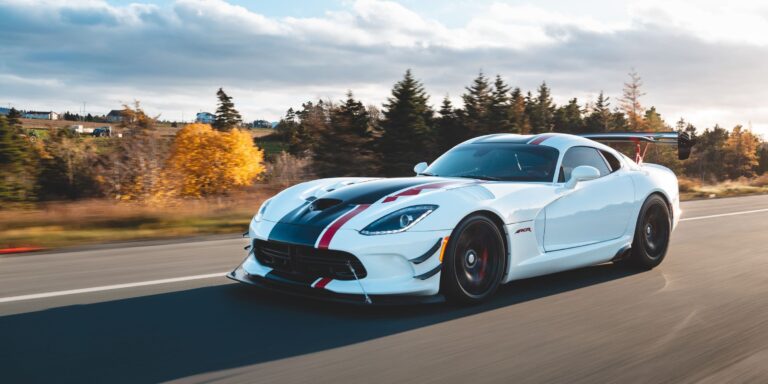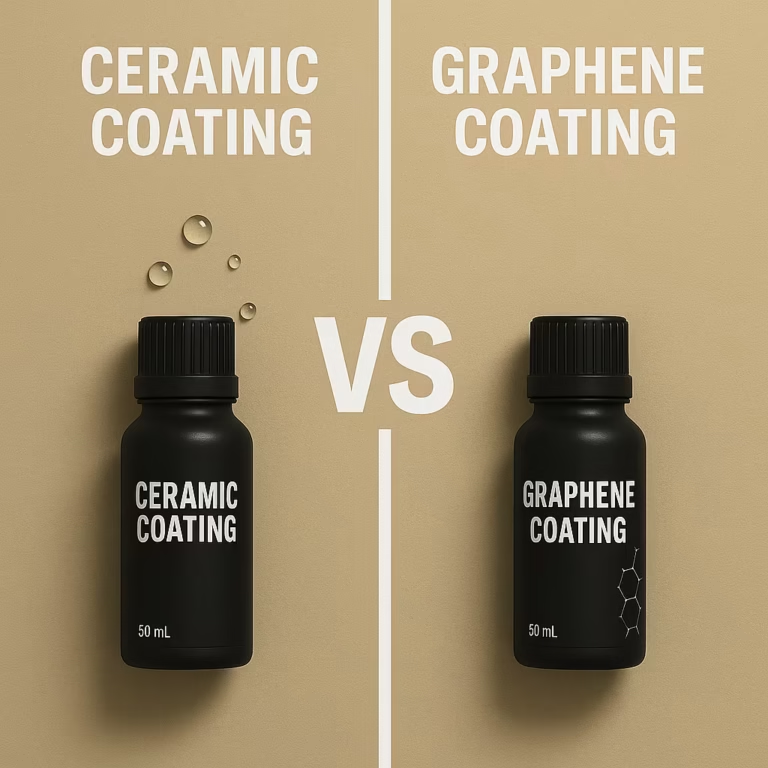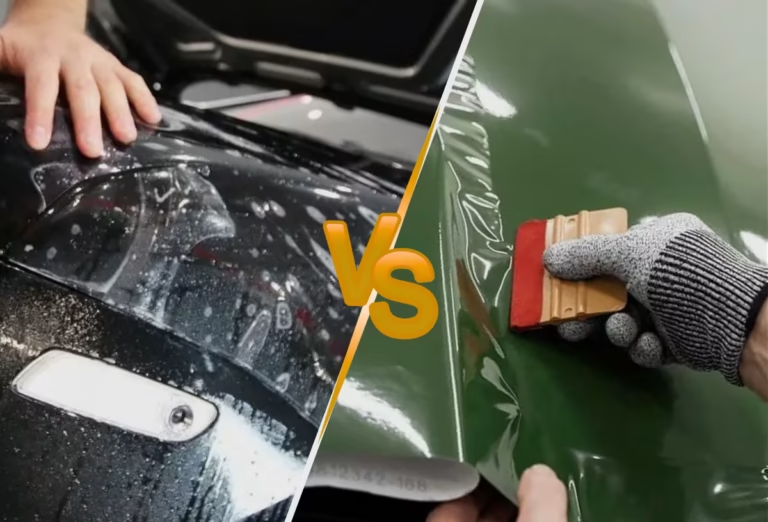Tinting car windows has become more than just an aesthetic choice for drivers. Many car owners face issues like excess heat inside the cabin, glare from the sun, fading interiors, and privacy concerns. At the same time, regulations on how dark your tint can be vary across states, which often makes it confusing to choose the right type of tint film. We explain everything you need to know about the different types of auto window tint, how each one works, and which option suits your driving needs best. By the end, you’ll understand the strengths and weaknesses of each tint type, how to compare their performance, and how to make a choice that balances comfort, safety, and legal compliance.
What Is Auto Window Tint? Key Concepts and Terms
Auto window tint, often called window film, is a thin, multi-layered sheet applied to the inside of a vehicle’s glass. It is engineered to control how much visible light, infrared radiation, and ultraviolet rays pass through the glass. The performance of window tint is usually described using measurements such as VLT (Visible Light Transmission), which tells you how much light can enter; IRR (Infrared Rejection), which shows how much heat from the sun gets blocked; and UV rejection, which protects both passengers and interiors from harmful ultraviolet rays. Another factor to consider is reflectivity, which describes how much glare the tint produces.
Understanding these terms is important because not all tints are created equal. Some are designed for affordability, while others focus on heat rejection or clarity. Legal restrictions also play a big role, as every state or country sets rules on how dark or reflective your tint can be. Knowing these fundamentals helps drivers pick a film that delivers both comfort and compliance.
Why Choose Window Tinting for Your Car?
Window tinting is not just about looks; it solves several common problems drivers face every day. The most immediate benefit is heat reduction. Quality tint reduces the amount of solar energy entering your car, keeping the cabin cooler and reducing the need for constant air conditioning. This helps lower fuel consumption over time. Tints also block up to 99% of harmful UV rays, protecting your skin and preventing your seats, dashboard, and upholstery from cracking or fading. Another practical advantage is glare control, which makes driving safer during bright days or when facing headlights at night.
Privacy and security are also major reasons people choose tint. Darker shades help keep valuables hidden from view and give passengers a sense of comfort. On top of that, many tints add a safety layer to glass, making it harder for windows to shatter during accidents or break-ins. Beyond protection, drivers also appreciate how tinting adds a clean, professional look to their vehicles, often increasing resale value. Together, these benefits explain why window tinting is one of the most popular upgrades for cars.
Types of Auto Window Tint / Film Varieties
Auto window tints come in different forms, each designed with specific materials and purposes in mind. The type you choose will influence how your car looks, how much heat it blocks, whether it interferes with signals, and how long it lasts. Below are the most common varieties of tint film explained in detail.
Dyed Window Tint / Film
Dyed window tint is one of the most affordable and widely available options on the market. It is made by placing a layer of dye between an adhesive and a protective polyester top coating. This design gives the glass a darker shade, which provides improved privacy and reduces glare from sunlight and headlights. Dyed tints can block some heat and UV rays, but their performance in heat rejection is lower compared to premium films. Over time, exposure to sunlight may cause the dye to fade, leading to a lighter appearance and reduced effectiveness.
The main advantage of dyed tint is cost; it is the least expensive option, making it popular among drivers who want the look of tinting without investing heavily. However, it is better suited for cooler climates where heat reduction is not the top priority. Drivers who prioritize budget and aesthetics often find dyed tint a reasonable starting point.
Metalized / Metallic Window Tint
Metalized tint is produced by embedding tiny metallic particles within the film layers. These particles make the tint more durable and resistant to scratches compared to dyed films. They also enhance heat rejection by reflecting solar radiation away from the glass, keeping the cabin noticeably cooler. In addition to blocking heat, metalized films offer strong UV protection and improve window shatter resistance.
Despite these advantages, metallic tint comes with a drawback: it can interfere with electronic signals. Car radios, GPS, and mobile phones sometimes face reception issues when metalized films are applied. This makes it less ideal for drivers who rely heavily on in-car navigation and communication devices. On the positive side, its shiny or reflective finish appeals to drivers seeking a bold appearance. Metalized tints usually sit in the mid-range price category, providing a balance between durability, heat rejection, and cost.
Hybrid (Dyed + Metal) Tint
Hybrid tint combines both dyed and metallic layers to deliver a mix of benefits. The dyed layer provides color and glare reduction, while the metallic particles increase durability and heat rejection. This combination reduces the reflective appearance of pure metalized films while avoiding the quick fading issue often seen with dyed films.
Hybrid tints are valued for offering a good middle ground. They block more heat than dyed options but avoid the heavy mirror-like shine of metallic films. Signal interference is usually less than with fully metalized tints, though not entirely eliminated. With moderate pricing, they appeal to drivers who want balanced performance without spending as much as they would on ceramic or crystalline options. Hybrid films are often recommended for drivers looking for reliable UV and heat protection without compromising style or breaking the bank.
Carbon Window Tint / Film
Carbon tint uses carbon particles infused into the film to improve performance. Unlike dyed films, carbon tint does not fade over time. Its matte, non-reflective finish provides a sleek appearance while offering excellent UV protection and moderate heat rejection. Carbon particles block infrared radiation more effectively than dyed or hybrid films, making the cabin cooler and reducing strain on the air conditioning system.
Another advantage of carbon tint is its long lifespan. With no dyes that degrade under sunlight, it maintains its look and effectiveness for many years. It is more expensive than dyed or hybrid films but provides a strong balance of durability, appearance, and functionality. Drivers in sunny regions who want effective heat control without paying for premium ceramic film often choose carbon tint. Its non-reflective style is also popular with those who prefer a sophisticated, understated look.
Nano-Ceramic / Ceramic Window Tint
Ceramic window tint is considered the premium standard in tinting technology. It is made using nano-ceramic particles that are non-conductive and non-metallic. These particles block up to 99% of UV rays and reject a very high percentage of infrared heat, making it one of the best films for comfort. Ceramic tint also reduces glare without compromising visibility, meaning drivers can enjoy clear views both during the day and at night.
Because it does not contain metal, ceramic tint does not interfere with electronic devices. It also outlasts dyed and carbon films, resisting fading and maintaining performance over many years. However, ceramic film is among the most expensive options, making it an investment for drivers who want maximum protection and quality. It is particularly well-suited for hot climates, luxury vehicles, or drivers who spend long hours on the road.
Crystalline / Spectrally Selective Film
Crystalline films, also known as spectrally selective tints, are unique because they appear nearly clear but provide excellent heat and UV rejection. Instead of using dyes or metallic particles, these films use advanced multi-layer optical technology to selectively block harmful rays while letting in visible light. This makes the crystalline tint perfect for drivers who want protection without darkening their windows significantly.
The key benefit is that crystalline films comply with strict tint laws that restrict window darkness, while still offering comfort and skin protection. They are ideal for drivers in regions with high sunlight exposure who prefer a factory-glass look. The drawback is cost; these films are priced at the higher end, similar to ceramic tints. Still, they provide an option for people who want advanced performance without the aesthetic change of darker tints.
Color-Stable / Non-Fading Tints
Color-stable tint is engineered to resist discoloration and fading, unlike traditional dyed films. This type of film uses advanced dye formulations and stabilizing technologies to maintain its shade over years of use. It provides consistent UV protection, moderate heat rejection, and a natural look. Drivers often choose color-stable tint because it offers a reliable, long-term appearance without the purple fading effect that cheap dyed tints develop.
While not as high-performing in infrared rejection as ceramic or crystalline films, color-stable options are cost-effective and provide dependable results. They are best for car owners who want durability at a lower price point than ceramic while avoiding the short lifespan of standard dyed tint.
Safety / Security Film (Shatter Resistance, Ballistic, etc.)
Safety and security films focus on strengthening glass rather than heat rejection. These films are thick, multi-layered sheets designed to hold glass together during accidents, break-ins, or even severe impacts. While they often provide some UV protection, their main purpose is to increase safety by preventing shattered glass from scattering. Some advanced security films are engineered to resist forced entry or offer ballistic protection for high-security needs.
Security films are commonly used in commercial fleets, high-value vehicles, or by drivers who prioritize safety above all. They can be combined with tinted layers for dual benefits, though standalone security films are usually clear. Costs vary depending on thickness and protection level, with specialty ballistic films being the most expensive.
Factory / Pre-Tinted Window Glass (Privacy Glass)
Some vehicles come with privacy glass from the manufacturer, usually on the rear side and back windows. This “factory tint” is not actually a film but tinted glass, which means the color is built into the glass itself. While privacy glass offers shading and a stylish look, it does not block as much heat or UV rays as aftermarket films. Many drivers with factory tint still apply an additional film layer for improved protection.
The main benefit of privacy glass is that it is maintenance-free and lasts as long as the car. However, its limited performance in infrared and UV rejection means it is often seen as a starting point rather than a complete solution. Drivers should not assume factory tint provides the same protection as aftermarket films.
How to Compare the Tints: Performance Table
Below is a simplified comparison of the main tint types, showing performance across key factors:
| Tint Type | VLT Range | UV Protection | IR Heat Rejection | Lifespan | Cost Range | Visibility | Pros | Cons |
| Dyed | 5–50% | 60–70% | Low | 2–5 yrs | Low | Moderate | Affordable, improves privacy | Fades, limited heat rejection |
| Metalized | 10–40% | 90%+ | Medium | 5–8 yrs | Medium | Reflective | Strong heat control, durable | Signal interference, shiny look |
| Hybrid | 20–40% | 90%+ | Medium | 5–8 yrs | Medium | Balanced | Good balance, less fading | Slight interference possible |
| Carbon | 5–40% | 99% | High | 8–10 yrs | Mid-High | Matte | Long-lasting, non-fading | More expensive than dyed/hybrid |
| Ceramic | 5–70% | 99% | Very High | 10+ yrs | High | Clear view | Top heat rejection, no interference | Expensive |
| Crystalline | 40–70% | 99% | High | 10+ yrs | High | Nearly clear | Excellent protection, legal friendly | Expensive, no privacy |
| Color-Stable | 20–50% | 95%+ | Medium | 7–10 yrs | Medium | Consistent | Long-lasting color, reliable | Lower heat rejection than ceramic |
| Security Film | Varies | Moderate | Low | 10+ yrs | Medium–High | Clear or tinted | Safety, shatter resistant | Limited heat rejection |
| Factory Privacy Glass | Fixed | Low | Very Low | Lifetime | Included | Dark look | Built-in, stylish | Minimal UV/IR protection |
When comparing, drivers should weigh what matters most. In hot climates, ceramic or crystalline films perform best. For budget-conscious drivers, dyed or hybrid may be enough. Security-conscious drivers may prefer safety films, while those with strict local tint laws benefit from crystalline or light ceramic films.
How to Choose the Right Auto Window Tint for You
Choosing the right tint depends on your priorities, climate, and legal environment. Start by clarifying your main goal: if you want to cut cabin heat, ceramic or crystalline films deliver the highest performance. If privacy is your top concern, dyed or carbon films in lower VLT levels may be best. Budget also plays a role; dyed films are cheap, while ceramic films are an investment.
Climate is another key factor. Drivers in hotter regions should avoid dyed films, as they provide little heat control. Those in cooler regions may find dyed or hybrid films sufficient. Local laws determine how dark you can go, so always check VLT limits before installing. Finally, consider potential signal interference if you rely heavily on GPS or mobile devices; avoid metallic films in that case. Warranty and durability are also worth weighing, as premium tints last much longer and usually come with lifetime guarantees.
By thinking through these points, drivers can narrow options and select the tint that best balances comfort, cost, and compliance.
Installation, Maintenance, and Warranty
Professional installation is strongly recommended for auto window tint. While DIY kits exist, applying film without training often leads to bubbles, peeling, or uneven edges. Professionals use computer-cut patterns and controlled environments to ensure a clean fit. Although professional installation costs more, it prevents expensive mistakes and extends film life.
Common installation issues include trapped dust, misaligned edges, or improper curing that leads to peeling. Choosing an experienced installer reduces these risks significantly. Once applied, tint requires minimal care. Cleaning should be done with ammonia-free solutions and soft cloths to prevent scratching or damaging edges. Harsh chemicals and sharp tools should be avoided.
Warranty coverage varies by film type and brand. Premium films such as ceramic often come with lifetime warranties covering fading, bubbling, or peeling. Lower-end films may offer only limited coverage. Always ask about warranty details before installation, as they are a good sign of product quality and installer confidence.
Cost Estimates & Return on Investment
The cost of window tinting depends on the type of film, vehicle size, and installer expertise. On average, dyed films may cost between $150–$250 for a full car, while metalized and hybrid films fall in the $200–$350 range. Carbon tints often cost $300–$500, while ceramic and crystalline films are the most expensive, typically $400–$800 or more for a full installation. Security films or custom jobs can cost even higher.
While premium films carry a higher upfront price, they often pay off long-term. By reducing heat, they lower air conditioning use, which saves fuel. They also extend the life of interior materials, preventing costly repairs to upholstery, dashboards, and electronics. Additionally, high-quality tint increases resale value because it keeps the car’s condition better over time. For drivers in hot climates, ceramic or crystalline tint can quickly recover its cost through comfort and efficiency savings.
Legal Rules & Safety Standards by Region
In California, where OC Tint Solutions operates, window tint laws are very specific. The front side windows must allow more than 70% of light through, while the back side windows and rear window can be darker. Windshields are restricted to a top strip of tint above the manufacturer’s AS-1 line. Reflective or mirrored tints are generally prohibited.
Staying compliant is crucial, as law enforcement regularly checks tint levels. Illegal tint can result in tickets, orders to remove the film, and potential increases in insurance premiums. Beyond local laws, safety standards also matter. Films should meet automotive safety guidelines, ensuring they do not reduce driver visibility to unsafe levels. Always consult a professional installer who understands regional laws and offers compliant options.
Why OC Tint Solutions is Your Best Choice
At OC Tint Solutions, we specialize in offering a full range of window films, from budget-friendly dyed films to advanced nano-ceramic and crystalline options. Our installers use precision computer-cut technology to guarantee a perfect fit, backed by a lifetime warranty on most of our films. Customers in Anaheim and Costa Mesa trust us for consistent quality, professional service, and transparent pricing.
We also offer paint protection film (PPF), ceramic coating, and training programs, making us more than just a tint shop, we are a full-service automotive protection provider. With hundreds of satisfied reviews, our reputation speaks for itself.
If you are ready to protect your car with the right window tint, contact us today for a free quote. Visit our Anaheim or Costa Mesa location and let our team help you choose the best tint for your vehicle.




